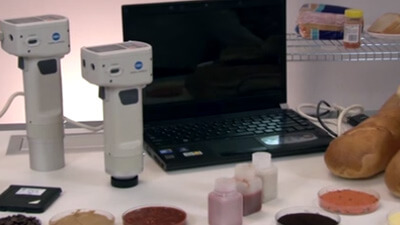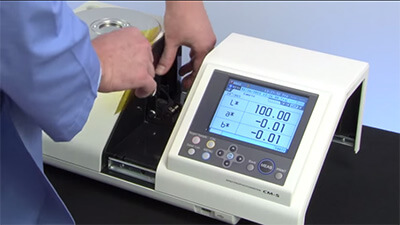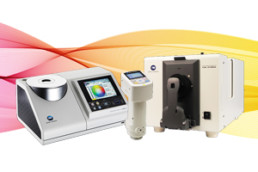Colorimeters vs. Spectrophotometers
Colorimeters are sophisticated color instruments that performs “tristimulus” color measurement based on light passing through three primary filters, red, green, and blue, which simulate the way the human eye is sensitive to light. Tristimulus color measurement provides data on how much of these three components are present in light reflected or transmitted by a product. Such data may be used to adjust color components or determine if the color of a manufactured product matches the standard or reference.
A tristimulus colorimeter has features such as comparatively low price, compact size, superior mobility and simple operation. Colorimeters can determine colorimetric values, under a single illuminant easily and are used primarily for reflectance measurements. However, a colorimeter is not appropriate for complex color analysis such as metamerism, colorant strength, or recipe formulation.
Spectrophotometers are the most precise, accurate and sophisticated color measurement instruments available for color quality control and color formulation. They are available as bench-top models for quality control and research labs, or portable for factory or field work. Spectrophotometers perform full spectrum color measurement. They measure the spectral reflectance or transmittance of an object across the full spectrum of visible wavelengths, from 400mm to 700mm. The instruments’ greater specificity makes them the instrument of choice for color formulation, specification of standards and tolerances, inter-plant color communication and quality control of color.
A spectrophotometer has high precision and increased versatility. It is suitable for more complex color analysis because it can determine the spectral reflectance at each wavelength. However, spectrophotometers can be more expensive than colorimeters. Always consider how accurate each color must be measured before selecting the type of instrument to use in a specific application.
Want to learn more about color measurement? Watch our two-part online color seminar about the essentials of color science and the elements of an effective color process within research and manufacturing environments.

The colorimeter is mainly used in production and inspection applications for color difference measurements. |

The spectrophotometer is used for high-precision analysis and accurate color management mainly in laboratories and research and development applications.
|











